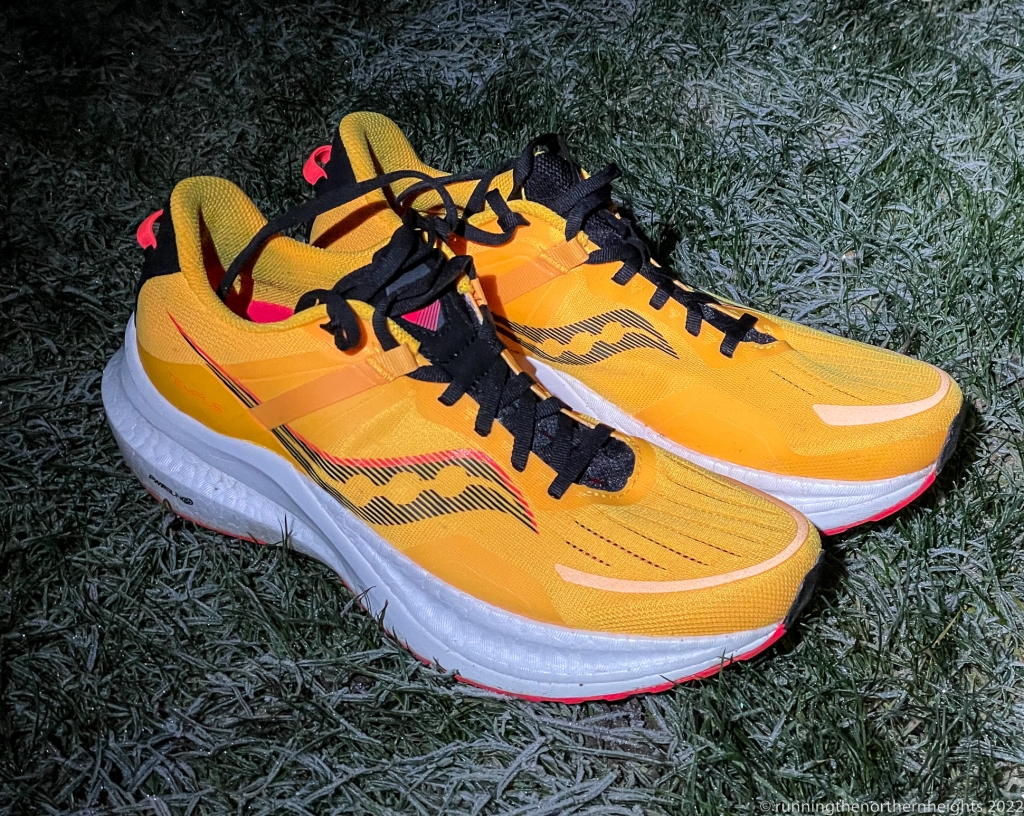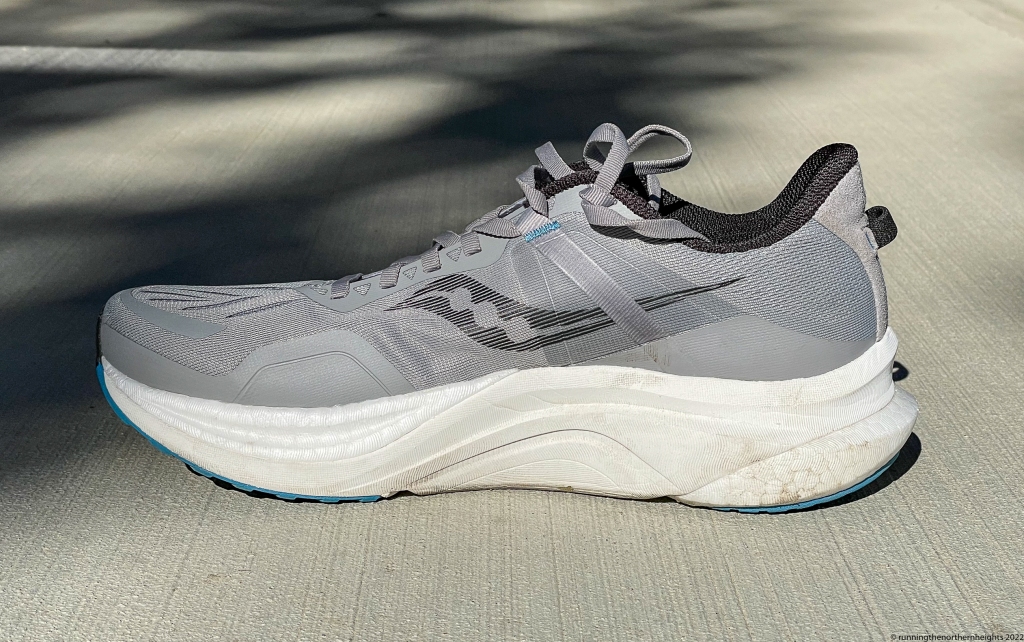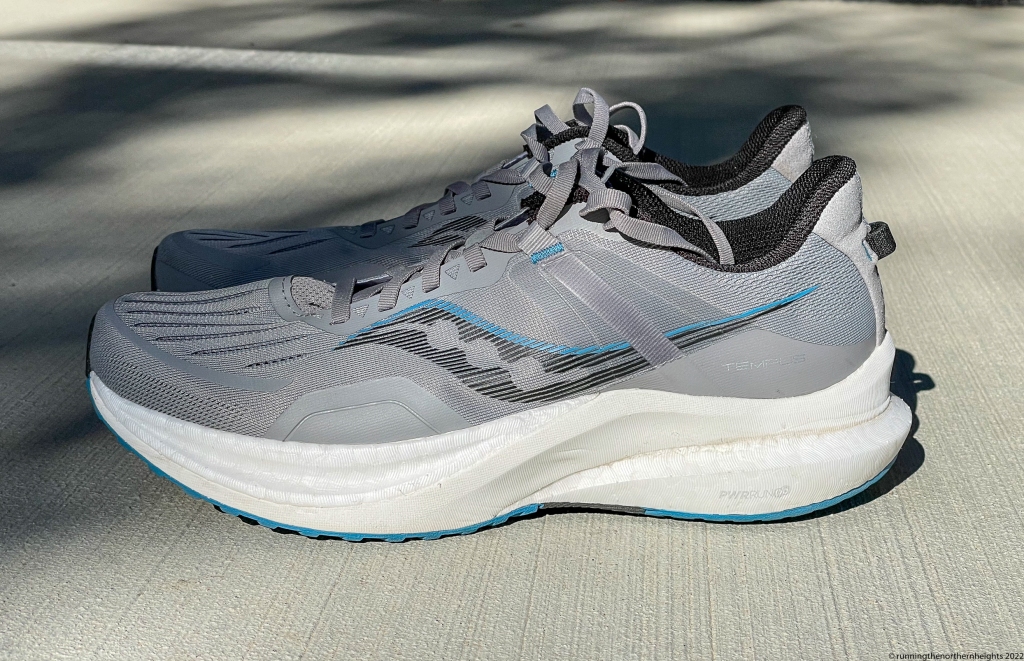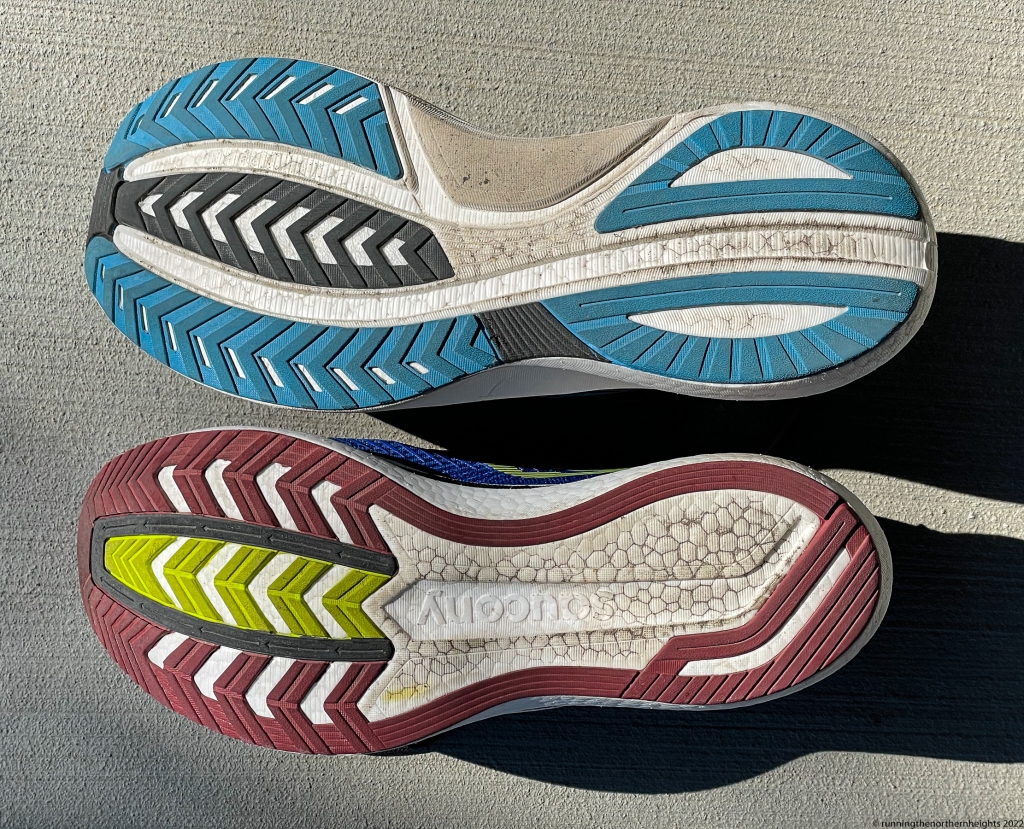Introduction: The Saucony Tempus is nothing short of a revolution in stability shoes. It provides the support of a stability shoe with the bounce and feel of a tempo trainer in a lightweight package. The Tempus achieves this by using a sole that combines Saucony’s bouncy and lightweight PWRRUN PB foam, found in its Endorphin Pro racing shoe range, with a stability frame made of firmer PWRRUN foam. This dual character continues in the upper which has a similar thickness and feel to the Endorphin Speed, but with a solid heelcup and support elsewhere where needed. It has become my go-to shoe for long runs and marathon pace pieces as it gives me great cushioning and support without feeling clunky and slow.

Overall: Superb. A very versatile running shoe – it rewrites the usual trade-off between stability, cushioning and speed. Good for both long runs and faster pieces. I like it a lot.
Weight: 252 grams/ 8.9 ounces (per shoe) – according to Saucony’s website as my scales are broken. This is very light for a stability shoe (they are usually more like 300 grams or more) and pretty light for any running shoe.
Drop (i.e. difference between height of midsole at back and front): 8 mm
Sizing: I wear a UK 9.5 in this shoe, which is the same size I wear for other Saucony non-Endorphin range shoes (I need to go up half a size for the Endorphin range) and for Brooks.

Stability (note – this is with my custom orthotics, but I have also tried them without as discussed below): Very stable. In fact, when I first wore these I was worried that they were too stable as the stability frame under the arch felt quite pronounced. Happily, they softened up very quickly and I no longer get this feeling (or perhaps I have just got used to them as I had been wearing neutral shoes for the last few months). As well as a stability frame, the wide, flared sole helps to reduce excessive lateral or medial movement at the forefoot. I have also now tried these without orthotics (as I am trying to transition away from them) and they still felt very supportive.

Cushioning: Very good – the full length PWRRUN PB foam feels like it provides a similar level of cushioning to the Endorphin Speed/ Pro but within a more stable platform. I have taken these to 20 miles with a marathon pace piece at the end and my legs felt much better afterwards compared to the Saucony Ride or Guide that I had been wearing previously.

Speed: Despite its appearance and high level of support, I have found this to be a quick shoe, which is one of its best features – it works just as well for a long run as for a tempo piece. It could probably even handle threshold runs, and for runners who do not switch to racing shoes for races it could be perfect for a half-marathon or even a marathon.
Upper: One of the reasons I bought these was the upper – it has many of the characteristics of a racing upper which wraps the foot in a thin but structured glove rather than the usual non-racing shoe approach of enclosing the foot within soft padding. I personally find the former approach more comfortable and durable, as well as cooler in hot conditions. The Tempus securely holds my foot in the heel (which has a very solid heelcup) and midfoot, and it has a wide toebox that allows for plenty of foot spread. The Tempus also uses the same inner fabric as the Endorphin Pro (1 and 2) and Speed (1 and 2) which I have found to be very durable on those shoes, even with my orthotics and bony heels.

Design: My first pair of Tempus were in the ‘Alloy Topaz’ colourway (as shown in most of the pictures in this post), which I have to admit is not the most exciting looking shoe. My second pair is in the ‘Vizigold’ colourway (shown in picture 1) which is much more exciting and also very bright in flat light so good for visibility to cars and other road users. Nevertheless, whether in battleship grey or ‘Vizigold’, it is still a good-looking shoe, with the thick, flanged white shoe giving it a racy look.
Durability: I took my first pair of Tempus to nearly 450 miles before retiring them, and the sole was still very good shape at that point and the cushioning felt fine. As I predicted when I first bought them, the materials used in the sole give the shoes a long life – in my experience, PWRRUN foam seems to go forever and PWRRUN PB foam is also pretty long-lasting; and the rubber on the sole looks to be the same as on other Saucony shoes which for me has lasted well over 400 miles.

July 2022; Updated December 2022